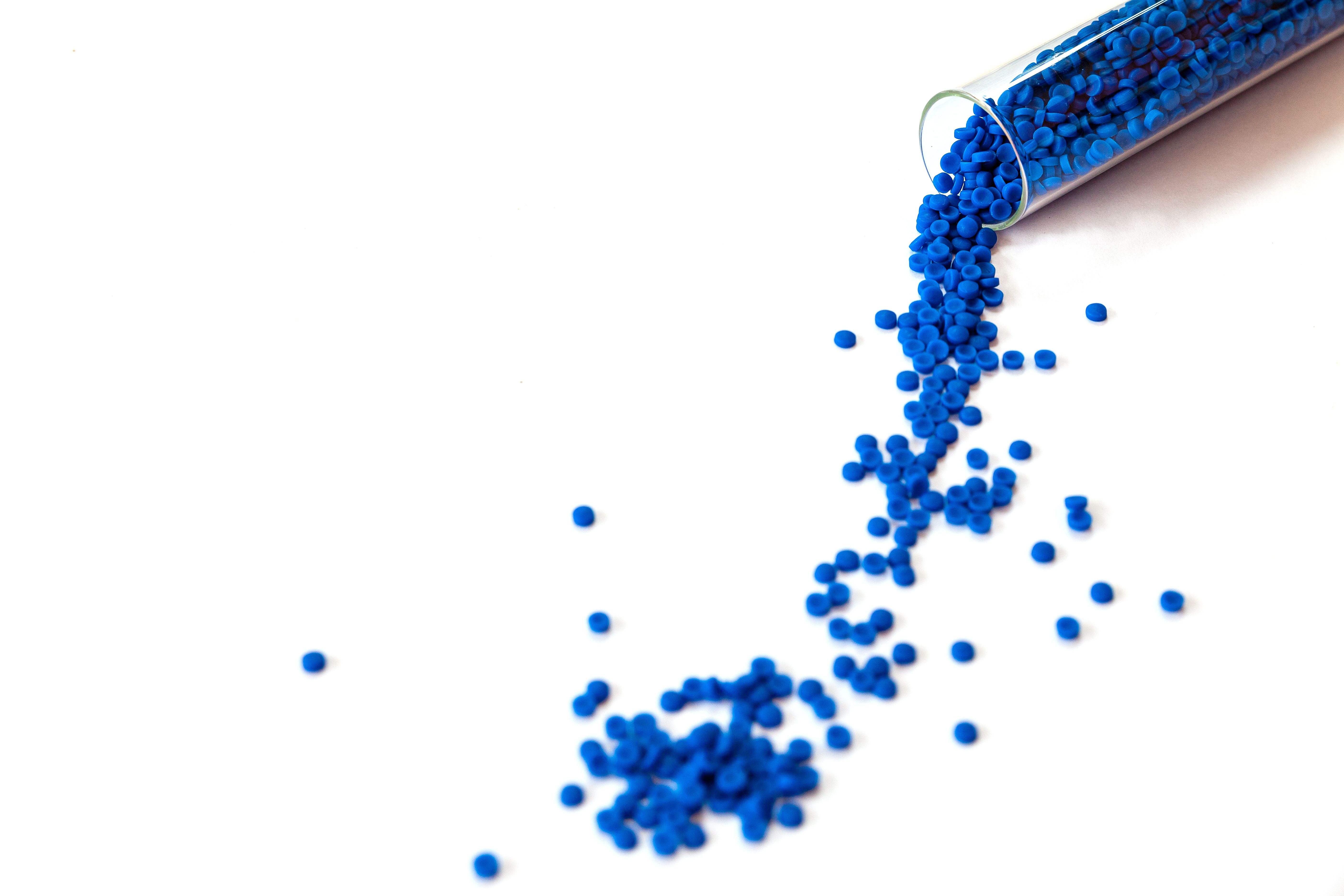SEC×RPLC and RPLC×RPLC Provide 2D-LC Separation of Water-Soluble Polymers
The two-dimensional liquid chromatography (2D-LC) separations were supplemented by the use of capillary-channeled polymer (C-CP) fiber columns.
Spurred by a desire to analyze multiple physiochemical components of a polymer sample at one time, a new study in the Journal of Chromatography A employed two-dimensional liquid chromatography (2D-LC) strategies for the separations of two water-soluble polymers, poly(methacrylic acid) (PMA) and polystyrene sulfonic acid (PSSA) (1). Two different coupling methods were used: size-exclusion chromatography (SEC) × reversed-phase liquid chromatography (RPLC), and RPLC×RPLC.
Close-up of plastic polymer granules, polymer plastic, polymer pallet, Plastic ball. | Image Credit: © Meaw_stocker - stock.adobe.com

Researchers Sarah K. Wysor and R. Kenneth Marcus, both of the Department of Chemistry in the Biosystems Research Complex at Clemson University in South Carolina, USA, said in the study that when it comes to properties of polymers that dictate their behavior and function, large polydispersity can cause certain problems, and yet previous analysis methods tend to report results for only one property at a time (1). 2D-LC, on the other hand, allows for the implementation of multiple chromatographic modalities on a single platform, facilitating the determination of such aspects as functional group content and molar mass. For this study, since the researchers said more efficient column formats are sought for both 1D and 2D separations, capillary-channeled polymer (C-CP) fibers, namely trilobal polypropylene (PP) and 8-channeled polyethylene terephthalate (PET), were used as stationary phases for RP separations.
One of the main problems the researchers identified with the use of size-exclusion chromatography (SEC) alone, at least as it relates to polymer separations, is coelution, which when it occurs can result in inaccurate readings of the size or molecular weight of an analyte. According to the study, this is exacerbated by polymers’ sensitivity to various factors such as pH, solvent composition, and temperature, all of which may contribute to conformation changes (1). To remedy this, multi-angle light scattering (MALS) is often applied for the verification of size and molecular weight without added calibration standards (as was done by these researchers to find the molecular weights of both PMA and PSSA).
But another augmentation can be made by adding a second dimension of separation, in this case reversed-phase liquid chromatography (RPLC). Similarities in polymers’ hydrodynamic radii that made SEC a nonviable option opened the door in previous studies to RPLC separations of water-soluble polymers (1). But coelution problems still exist here, in this instance yielding poor resolution. However, in a 2D-LC process, whether it be SEC×RPLC or RPLC×RPLC, resolution and peak capacity are improved because it is necessary to use orthogonal separation modalities in each respective dimension. When coupled, there is more, two-dimensional space for peaks to separate, with the end results of more comprehensive analysis and dissemination of information, specifically when addressing the physiochemical properties of polymers.
The researchers found that SEC×RPLC, while addressing the size and chemistry of PMA and PSSA, had a longer-than-desired separation time of 80 min and required high solute concentrations, 1.79 mg/mL for PSA and 0.175 mg/mL for PSSA, to obtain comparable absorbance responses, which limited resolution (1). Additionally, only three distinct species were found by SEC×RPLC in the polymers’ chemical distribution. That was compared to seven species when RPLC×RPLC was used; this method also cut separation time in half (40 min) and required much lower sample concentrations (0.595 mg/mL for PMA, 0.05 mg/mL for PSSA). The researchers felt that these results, combined with the utility of the C-CP fiber columns, were enough to encourage further study of 2D-LC approaches for separating water-soluble polymers.
Reference
(1) Wysor, S.K.; Marcus, K. Two-dimensional separation of water-soluble polymers using size exclusion and reversed phase chromatography employing capillary-channeled polymer fiber columns. J. Chromatogr. A, 2023, 1701, 464051. DOI: 10.1016/j.chroma.2023.464051
Study Explores Thin-Film Extraction of Biogenic Amines via HPLC-MS/MS
March 27th 2025Scientists from Tabriz University and the University of Tabriz explored cellulose acetate-UiO-66-COOH as an affordable coating sorbent for thin film extraction of biogenic amines from cheese and alcohol-free beverages using HPLC-MS/MS.
Influence of Concentration in Conventional GPC/SEC and Advanced Detection GPC/SEC
March 21st 2025Sample concentration is a parameter that can influence the quality of gel permeation chromatography/size-exclusion chromatography (GPC/SEC) separations and the obtained results. Understanding this influence can help to support the development of reliable GPC/SEC methods.
Multi-Step Preparative LC–MS Workflow for Peptide Purification
March 21st 2025This article introduces a multi-step preparative purification workflow for synthetic peptides using liquid chromatography–mass spectrometry (LC–MS). The process involves optimizing separation conditions, scaling-up, fractionating, and confirming purity and recovery, using a single LC–MS system. High purity and recovery rates for synthetic peptides such as parathormone (PTH) are achieved. The method allows efficient purification and accurate confirmation of peptide synthesis and is suitable for handling complex preparative purification tasks.







